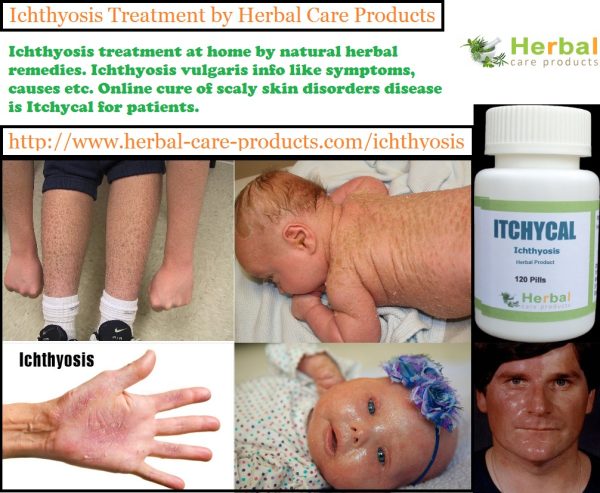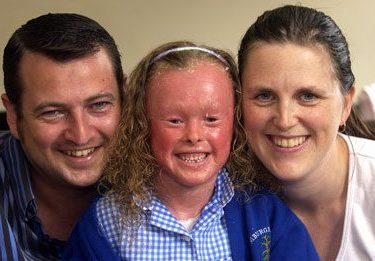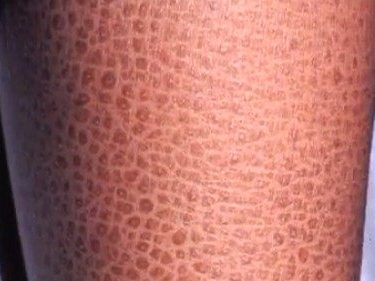What is ichthyosis vulgaris?
Ichthyosis vulgaris is an inherited skin condition that occurs when your skin doesn’t shed its dead skin cells. This causes dry, dead skin cells to accumulate in patches on the surface of your skin. It’s also known as “fish scale disease” because the dead skin accumulates in a similar pattern to a fish’s scales.
The majority of cases are mild and confined to specific areas of the body. However, some cases are severe and cover large areas of the body, including the abdomen, back, arms, and legs.
Symptoms of ichthyosis vulgaris
The symptoms for ichthyosis vulgaris by herbal care products. Symptoms of ichthyosis include:
- flaky scalp
- itchy skin
- polygon-shaped scales on the skin
- scales that are brown, gray, or white
- severely dry skin
- thickened skin
Ichthyosis symptoms are typically worse in winter, when the air is colder and dryer. The patches of dry skin typically appear on the elbows and lower legs, most often affecting the shins in thick, dark segments. In severe cases, ichthyosis vulgaris may also cause deep, painful cracks to develop on the soles of your feet or palms of your hands.
What causes of ichthyosis vulgaris?
Ichthyosis causes may be present at birth or appear in the first few years of a child’s life, but it typically disappears during early childhood. Some people may never have symptoms again, but for others, it can return during adulthood.
As with many other skin conditions, genetics play a role in the transmission of ichthyosis vulgaris. The condition follows an autosomal dominant pattern. This means that only one parent needs to possess the mutated gene in order to pass it onto his or her child. It is one of the most common of all inherited skin disorders.
In rare cases, adults can develop ichthyosis vulgaris even if they don’t carry the defective gene. Though this is rare, it’s most often associated with other conditions, including cancer, kidney failure, or thyroid disease.
Causes for ichthyosis vulgaris may also occur along with other skin disorders, such as atopic dermatitis (eczema) or keratosis pilaris. Atopic dermatitis, more commonly known as eczema, is known for causing extremely itchy skin rashes. The affected skin may also be thick and covered in scales. The white or red skin bumps caused by keratosis pilaris can look similar to acne, but they usually appear on the arms, thighs, or buttocks. This condition can also causes of ichthyosis rough patches of skin.
How is ichthyosis vulgaris diagnosed?
A doctor specializing in skin disorders, called a dermatologist, can typically diagnose ichthyosis vulgaris by sight.
Your doctor will ask you about any family history of skin diseases, the age you first experienced symptoms, and whether you have any other skin disorders.
Your doctor will also record where the patches of dry skin appear. This will help your doctor track the effectiveness of your treatment.
Your doctor may also perform other tests, such as a blood test or skin biopsy. This will rule out other skin conditions, such as psoriasis, that cause similar symptoms. A skin biopsy involves removing a small section of the affected skin for examination under a microscope.
Treatment of ichthyosis vulgaris
There is currently treatment for ichthyosis vulgaris. However, treatment of ichthyosis can help you manage your symptoms.
Home treatments
In the ichthyosis natural treatment exfoliating your skin with a loofa or a pumice stone, after you bathe use Itchycal for Ichthyosis herbal treatment can help you remove the excess skin.
You should also regularly apply moisturizers that have urea or propylene glycol in them. These chemicals will help your skin stay moist. Using products with urea, lactic, or salicylic acid can also help your skin shed dead cells. Using a humidifier in your home will add moisture into the air and keep your skin from drying out.
Prescription treatments
Your doctor may also prescribe specialized creams or ointments to help moisturize the skin, get rid of dead skin, and control inflammation and itching. These may include topical treatments containing the following ingredients:
- Lactic acid or other alpha hydroxy acids: These compounds, also used in antiaging cosmetics, help the skin retain moisture and reduce scaling.
- Retinoids: Retinoids may be used in difficult cases to slow your body’s production of skin cells. These substances are derived from vitamin A, so they may have some adverse side effects. These may include lip swelling, hair loss, or birth defects if taken during pregnancy.
Herbal Treatment
This is the way to treat genetic scaly skin disorders herbal treatment safely. Treatment by Ichthyosis natural remedies we prefer the Herbal Care Products company who create herbal products for patients. Ichthyosis herbal remedies is the Itchycal product. Best natural treatment for Ichthyosis help to improve dead skin cells patches & herbal treatment of ichthyosis have no side effects.
Living with ichthyosis vulgaris
Herbal treatment for ichthyosis vulgaris and similar skin conditions is difficult at times, especially for children. If the cosmetic impact of the condition becomes too much, you may want to attend a support group or see a Herbal Care Products professional. Natural treatment of ichthyosis can help you to regain your confidence and deal with any emotional difficulties you may encounter.
The key to living with this condition is learning to make management of this disease part of your daily routine.
Source Link : http://www.healthline.com/health/ichthyosis-vulgaris#Overview1



